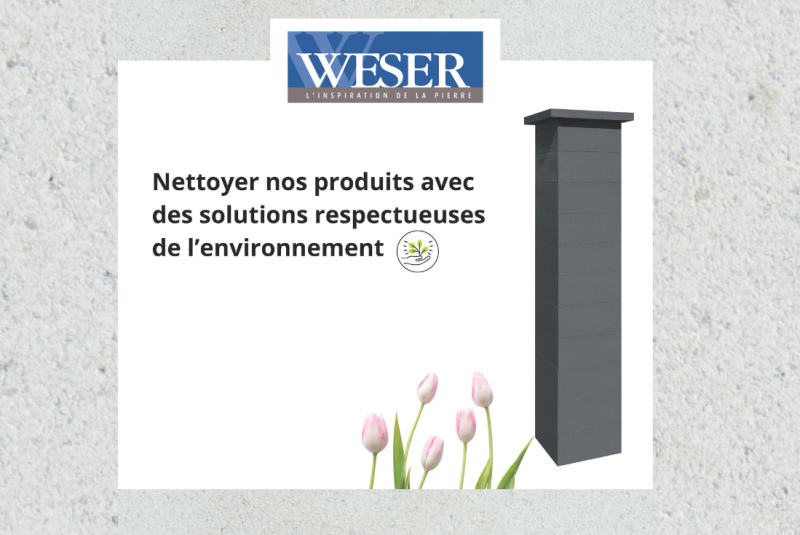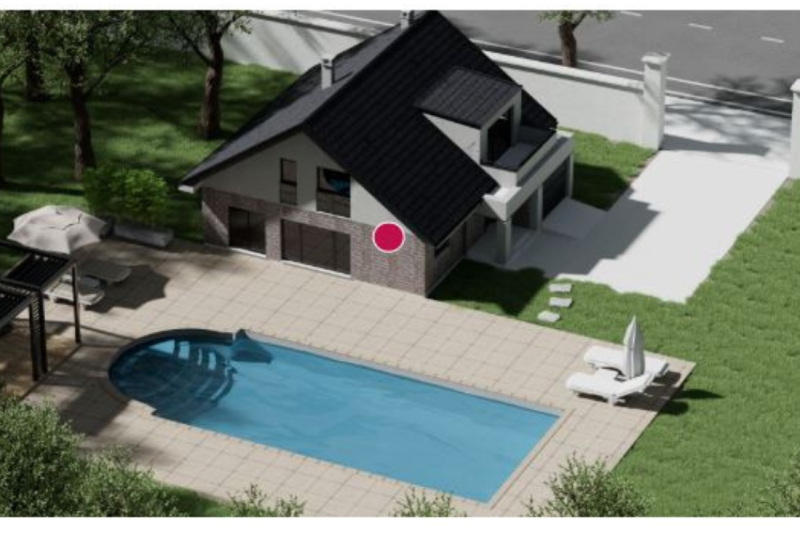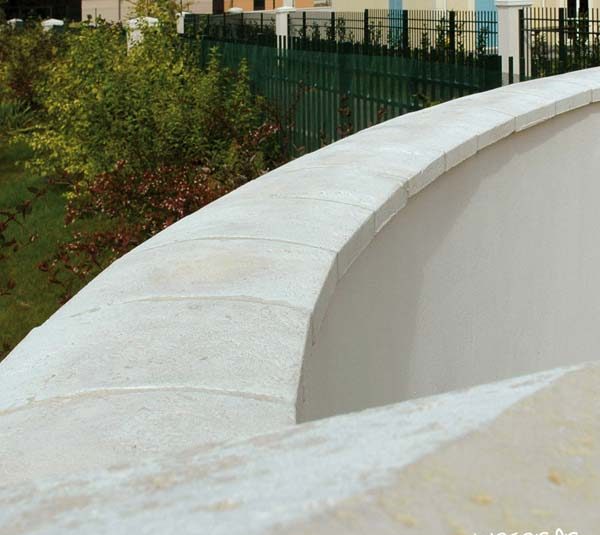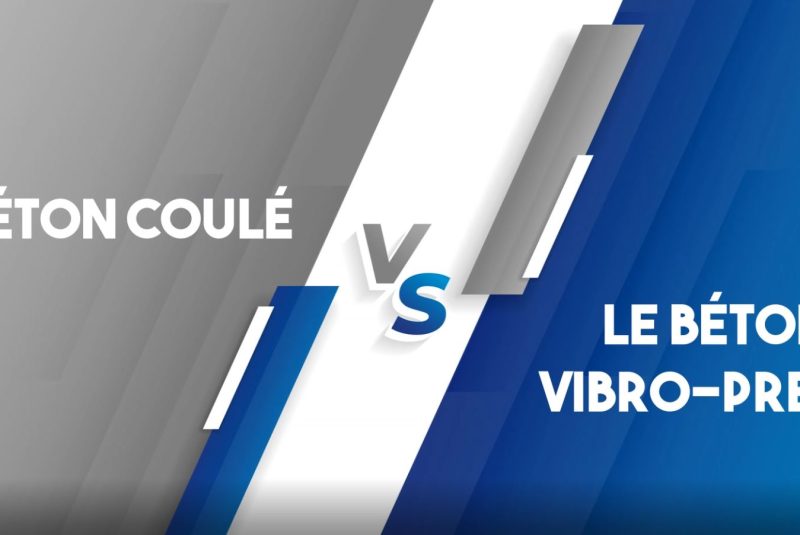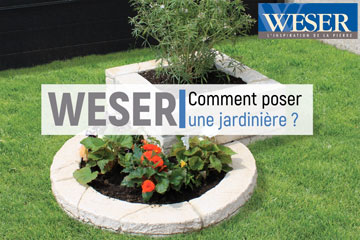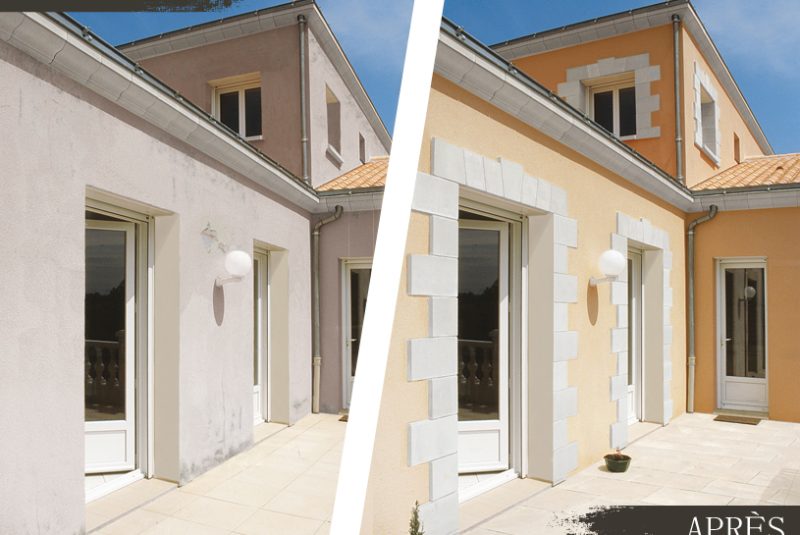Wall cladding – Inspiration, installation and cutting: everything you need to know!
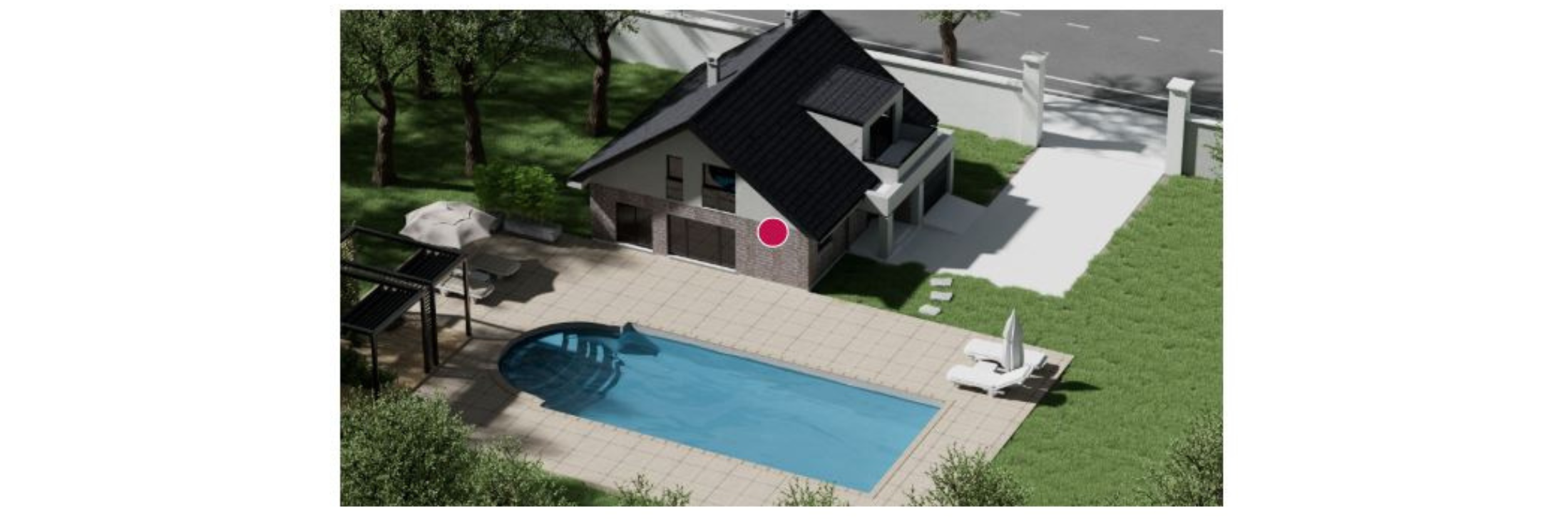
Wall cladding is the ideal solution for dressing up your walls in style, whether indoors or out. Find out why you should choose this easy-to-install solution, the different types offered by WESER, and practical tips for successful installation.
Why choose wall cladding?
Wall cladding offers a number of aesthetic and functional advantages, allowing you to add a unique touch to your walls.
An aesthetic and functional solution
Wall cladding can be thought of as an additional skin on the interior or exterior walls of a structure. This additional layer serves 2 functions: on the one hand, it reinforces the building’s protection against climatic aggressions such as rain and wind, and on the other, it aesthetically transforms the habitat by giving it character and style.
To complete your wall finishes and add a touch of cachet to your decor, wall cladding is the ideal choice. Wall cladding is commonly used to renovate a wall, delimit a space or even clad a facade to give your property unbeatable style! The advantage of wall cladding is that it can be used anywhere, indoors or out!
What’s the right look for a cladding panel?
The aesthetic appeal of exterior wall cladding is varied and adapts to all tastes and decorative styles. For example, you can install :
- Brick wall cladding for a traditional look.
- Assemblies in different types of stone, to suit all styles, with or without joints, and different stone reliefs and sizes, for a look suited to your region.
Choosing wall cladding colors
The choice of colors is a matter of individual taste. However, it’s also important to choose a color that matches the style of the house. The choice is between warm, neutral or cool colors.
- Warm yellows, beiges and oranges add luminosity and a Mediterranean touch.
- Red, the warm color characteristic of brick, gives a warm, traditional look.
- The cool colors of certain stones create a modern, refined ambience.
- Gray, white and black, these neutral colors create a sober, elegant ambience, perfect for contemporary style.
Suitable for indoor and outdoor spaces
Whether indoors or out, wall cladding is the trendy product to dress your walls in a modern or traditional way. The different textures and colors of WESER cladding give you a wide choice to enhance all or part of your home.
The different types of WESER wall cladding :
At WESER, we offer a wide range of facings to suit every style.
Inspiration Pierre :
The use of natural stone wall cladding is an aesthetic, durable and easy-to-maintain solution that can transform any space. Thanks to WESER’s range of textures and shades, the design possibilities are vast and suited to a variety of architectural styles.
- Alverstone
-
The soul of stone.
“Nature tamed with geometric shapes and soft colors for a unique habitat”, in the spirit of North America’s Mount Alverstone.
ALVERSTONE cladding guarantees a natural look and elegance. It will enhance your walls with a “cut stone” look and invisible joints, for both interior and exterior applications, in new construction or renovation: interior walls and exterior facades, of course, but also behind a wood-burning stove, around a fireplace, or as the base of a staircase or kitchen island. It’s available in 5 shades, so you can find the one that suits your needs and your region.
This Z-shaped cladding is easy to install, for a perfect finish.
- Murok Arkansas
-
A contemporary creation of wall plaques!
This cladding is so similar to stone that its texture offers a strong minerality that can be perfectly integrated into a modern environment with clean lines. In fact, MUROK ARKANSAS’s seamless, geometric cut-outs adapt well to the clean lines of contemporary art, and the regular, sharp angles easily catch the light to create remarkable effects.
The 4 neutral colors create a feeling of calm and sophistication.
- Murok Strato
-
A sure bet for adding character to your wall.
Whether you want to recreate the ambience of a Berlin loft or liven up the sides of a contemporary facade, MUROK STRATO will be the expression of your creativity. This reconstituted stone, whose texture expresses a strong minerality, will blend perfectly with all the materials used in modern decorating, and will integrate perfectly into a décor with uncluttered lines.
Its snug-fitting, finger-jointed assembly, synonymous with modernity, creates panels on which the light of a down-lighting fixture will catch to form a multitude of luminous touches.
- Murok Sierra
-
The rough beauty of nature in its purest form…
With its irregular formats and rough stone profile, the Sierra cladding range expresses nature in all its purity. Sierra, which means “mountain range”, brings us the simple, true beauty revealed by the strength of our mountains. All that’s left is for you to arrange the cladding in the same way that craftsmen used to arrange stone.
- Murok Atlas
-
Murok Atlas: the authenticity of minerals!
Transpose the mineral rendering of raw rock to your home to create the eye-catching contrast of “dry stone”. In fact, some of the greatest successes in decorating come from contrasting materials: stone and fabric, iron and wood.
With three basic sizes and a wide range of shades, Murok Atlas cladding can be laid quickly, realistically and seamlessly for a rustic, authentic dry-stone look.
Inspiration Brick
A brick finish on a wall, low wall or facade adds a warm, traditional touch that blends in with most of our regions’ architectural styles. WESER’s range of brick facings, with their array of textures and shades of red, brown and ochre, will add character and charm to any space in your home.
- Granulit
-
A touch of rusticity and industrial charm.
The breadth of the GRANULIT range means you can personalize a room or facade with warm colors, adapted to the particularities of our regions, with a play of contrasts that will enhance your home, a fireplace, a staircase or a piece of furniture that’s close to your heart. Combined with beams, a skylight or traditional lime plaster, brick cladding creates a warm, welcoming atmosphere.
The versatility of our range means that we can satisfy every need, from the reconstitution of a traditional wall, to the contemporary ambience of its white color, or even trendy decors with an industrial style…
An ideal covering for a comfortable home where you feel safe and secure.
- Interfix
-
The versatility of multi-colored brick for an architectural patchwork.
From north to south, brick is a traditional building material, deeply rooted in every landscape. The material has survived the centuries to become a highly sought-after decorative element.
Interfix is the most versatile cladding, with a wide range of colors and easy jointing to create the ambience you’re looking for, both inside and outside your home. You can combine our facings with the natural shades of oak or walnut, or create visual contrasts with white or dark grey, reinforce the industrial look, use bricks in a kitchen as a backsplash, create a reading corner or enhance a headboard.
Get inspired with WESER: an exclusive video
Explore the many decorating possibilities with WESER wall cladding in our exclusive video.

Explore the design possibilities :
Concrete examples of achievements
How to install wall cladding?
Wall cladding can be installed by a professional or by yourself, provided you follow a few key steps.
The different types of support :
Rigid substrates (plasterboard, plywood, wood panels, wood) :
Cover all wood substrates with a damp-proof coating, ensuring a perfect seal. Lay galvanized metal or fiberglass mesh, using galvanized metal fasteners spaced 15 cm vertically and 40 cm horizontally. Cover the mesh with a 2.5 cm layer of mortar and allow to dry.
Brick, concrete, clean masonry surfaces (untreated, unpainted, non-jointed) :
In the case of parged walls, the walls must be degreased before the adhesive is applied.
The wall must not be damp. In the case of porous substrates, the application of a primer is recommended. The waiting time after completion of the structural work before applying the cladding is 2 months for reinforced concrete.
Metal Panels :
Preparation is the same as for rigid substrates, except that the wire mesh must be installed using self-supporting screws with a minimum length of 13mm and a 10mm head.
Painted or jointed brick, concrete or other smoothed masonry surfaces:
These supports can be prepared in two ways:
– Clean the substrate with sand or pressurized water to restore its original appearance and texture.
– Apply metal or fiberglass mesh using galvanized fasteners. Cover the mesh with a 2.5 cm layer of mortar and leave to dry for 24 to 48 hours.
Supports Thermal insulation panels :
Apply a first coat of adhesive. Install fiberglass mesh, anchors and second coat of adhesive Allow to dry between 3 and 7 days, depending on weather conditions Apply primer.
Preparing to lay the cladding panels :
When installing cladding behind a heat source, DTU 24.1 P1/A1 for the installation of stoves must be observed.
defines the minimum safety distances to be observed:
– Between the stove and the wall (in the case of a stove top outlet): distance = 3 times the Ø of the
connecting duct. For example, with a 20 cm Ø duct, the distance between the back of the stove and the
wall must be at least 60 cm. For < 12.5 cm pipes, the minimum distance is 37.5 cm.
– Between flue and wall (in the case of a rear outlet): distance = 3 times the Ø
of the connecting flue. Same example as above. If the duct is double-insulated, the distance will be
reduced to 1.5 times the Ø of the exhaust duct.
– Mix wafers from the same carton to distribute the different shades, or even
wafers from several cartons to obtain a more homogeneous result.
– Facings should be installed in dry weather, with temperatures between 5°C and 30°C. In hot weather, it may be
necessary to moisten the wall and cladding boards beforehand.
– Siding installation begins 50cm from the ground, with a perfectly horizontal line or guide strip that
guarantees a better finish.
FAQ – Frequently asked questions about wall cladding
- What is wall cladding?
-
What is wall cladding?
Wall cladding is a decorative covering that is applied to interior or exterior walls to enhance and protect them.
- How do I cut cladding panels?
-
How do I cut cladding panels?
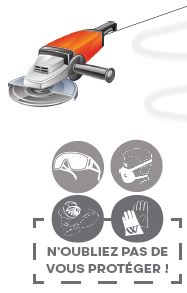
If you need to make a cut, draw the cutting line in pencil on the faceplate. When cutting, don’t hesitate to use masking tape (adhesive paper) on the area to be cut, to protect the inserts from splinters. This will also enable you to draw the best possible line for the cut to be made.
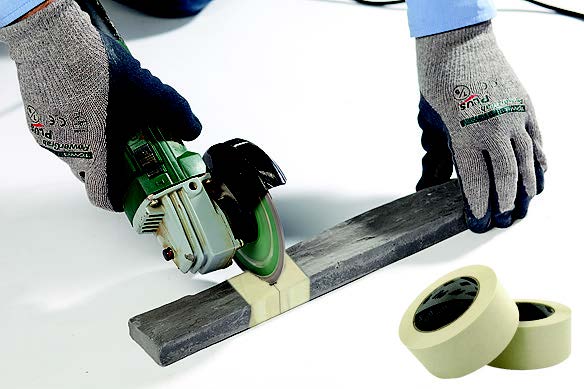
- What thickness of adhesive is required for wall cladding?
-
What thickness of adhesive is required for wall cladding?
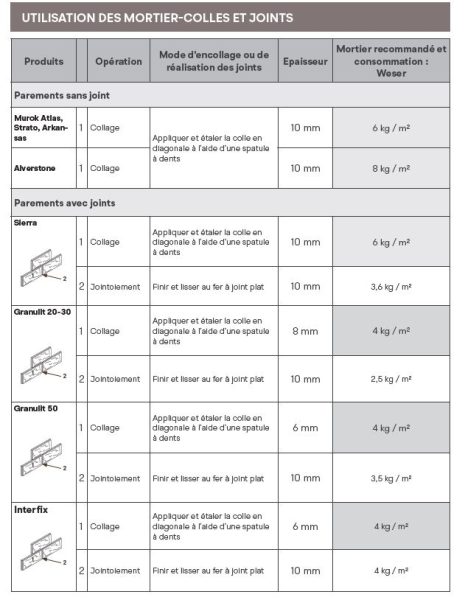
- Is it possible to install wall cladding over a painted wall?
-
Is it possible to install wall cladding over a painted wall?
Yes, but the wall must be properly prepared. Apply a first coat of adhesive. Apply a fiberglass mesh, anchors and a second coat of adhesive. Allow to dry for 3 to 7 days, depending on weather conditions.
- How do you protect and maintain wall cladding?
-
How to maintain wall cladding
Like natural stone, reconstituted stone cladding needs to be regularly cleaned and maintained if it is to retain its original appearance. Made from natural materials, it is normal for them to develop a patina over time.
Never use a high-pressure washer that could damage the surface of the siding.
WESER-NET EF: Efflorescence cleaner.
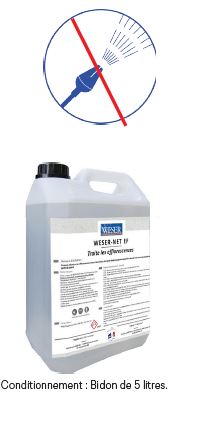

The rare appearance of whitish streaks or halos on the surface of products is a natural and technically unavoidable phenomenon that can occur, under certain drying conditions, on any cement-based product. These efflorescences in no way affect the quality of the product, and fade over time. To reduce efflorescence, WESER offers WESER NET Anti-Efflorescence (WNEF). This product dissolves efflorescence.
– Dilute 1 volume of WESER-Net EF with 2 to 4 volumes of water as required.
– Always add the product to the water, not the other way round.
– Application temperature: between 8 and 25°C
– Apply evenly to the surface to be treated, taking care not to leave any part uncovered (do not spray).
– Leave on for 30 seconds to 2 minutes, then rinse thoroughly with a jet of water until all foam has disappeared.
– Do not allow product to dry. Keep surface wet until complete rinsing to avoid the appearance of new efflorescences.
– In the event of heavy efflorescence, apply the product at a higher concentration.
– All traces of product must be rinsed away.
– Carry out a test on a limited area before treating the entire structure.WESER-PRO TRA: Protects reconstituted stone.
Once the facings have been applied and dried, it is essential to apply a protective product: WESER-PRO TRA.
It greatly reduces the penetration of water into products and, consequently, the appearance of efflorescence. This limits the development of micro-organisms and the encrustation of dirt, and facilitates surface cleaning.– Do not apply WESER-Pro TRA in wet weather, as the product will be washed away, or below 10°C.
– Apply WESER-Pro TRA in a single coat using a brush or sprayer.
– Avoid applying too much, and ensure even application.Read the label on the can carefully.
- How do you calculate the amount of cladding required?
-
WESER offers two possible solutions for determining the quantity of reconstituted stone required:
Or, you can use the WESER siding calculator available on our website, which will give you an estimate:
– Number of cartons of cladding to be ordered for the surface area of wall to be worked on, with a 5% surcharge for losses and cut-outs,
– Number of bags of glue and sealant,
– Number of protective cans.Either start by measuring the height and width to calculate the total area to be covered;
Then measure the wall angles in linear metres (including doors and windows, if covered with
stone), to determine the quantity of angles required;
Subtract the openings (doors, windows) and the area covered by angles from the total surface area, bearing in mind that 1 linear metre of angle covers approximately 0.25-0.30 m².The substrate must be sound, smooth and clean, mechanically resistant and carefully dusted. It is the installer’s responsibility to ensure that the weight of the facing selected is compatible with the structure of the substrate and the adhesive used.

